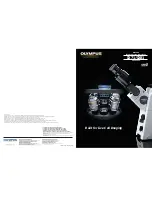
The basic principle of digital in-line holographic imaging
The reconstructed images can be further analyzed, saved, or assembled into the volume re-
constructions based on the application.
7
Software
The holograms acquired by the Desktop microscope camera need to be properly processed in
order to reconstruct the image.
4Deep provides 2 standard software packages,
Swordfish
,
Octopus
, and
Stingray
, which incor-
porate our patented fast hologram reconstruction algorithm as well as additional functionality.
Swordfish
is a particle counting software capable of detecting, counting and measuring parti-
cles in real time with the speed of up to 15 frames per second.
Octopus
is a general purpose research-grade software package that can reconstruct holograms
acquired by the microscope camera at the rate of up to 15 frames per second. Octopus provides
advanced 3D visualization and particle detection capabilities.
Stingray
is an automated particle recognition and morphology classification software platform.
It develops a user defined database from which it learns the type of objects to be detected.
Please refer to the Swordfish, Stingray and Octopus brochures and manuals available at www.4-
deep.com for the additional details on software installation and use.
Custom software solutions can be developed by 4Deep based on customer specifications. Con-
tact us for details.
8
Tips for Optimal Hologram Acquisition
Image resolution is dependent on the SOD (Source to Object Distance). As this distance
decreases, the resolution and the magnification increase. Maximum resolution is obtained
by placing the sample/object as close as possible to the Point Source (PS). However, keep in
mind that as the SOD distance decreases, the field of view becomes smaller.
7



























